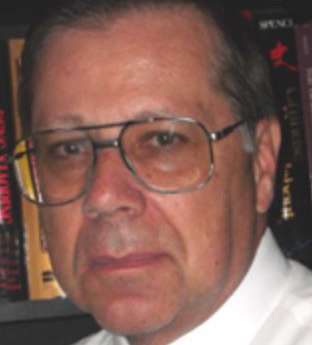
By JOHN RICHARD SCHROCK
Nuclear power reactors are not nuclear bombs. To understand the huge difference, it is necessary to understand the levels of uranium enrichment. Uranium from open pit or underground mining is usually only 0.1 percent or 1/1,000th uranium. It must go through a milling process in order to separate out most of the uranium and discard the ore.
This natural uranium is made of a mix of 238U and 235U. Uranium 238 is stable, but 235U is “fissile.” This means that it is split with neutrons and in turn produces particles to continue the reaction, splitting other 235U atoms. The naturally extracted ore is usually over 99 percent the inert 238U. Nuclear reactors generally require enriched uranium with higher concentrations of 235U, usually between 3.5 and 4.5 percent.
The public often hears of “gas centrifuges.” Two processes can be used to increase the concentrations of 235U: gaseous diffusion and gas centrifugation. Both processes take time.
In contrast to power plants, atomic bombs use approximately 93.5 percent enriched uranium. This involves advanced technology and expertise to produce. Thus many countries have long used nuclear power without developing the capacity to develop atomic bombs.
As a young science teacher teaching middle school in Kentucky in 1970, the school had no money to buy or rent films. But I could get free films from the center in Oak Ridge and show the extensive testing that was occurring in Hanford, Washington and other nuclear energy sites. “Today we burn the rocks, tomorrow we will burn the oceans” was an euphoric introduction. “Burning rocks” referred to nuclear fission of uranium and “burning the ocean” was a generalization about moving to controlled fusion as seen in hydrogen bombs.
This later still remains a dream but using a tokamak or laser to control a fusion nuclear reactor may someday come true. The energy from 2.2 pounds (1 kilogram) of uranium concentrated in an atomic bomb results in about 17.5 thousand tons of TNT in explosive energy. But controlled in a nuclear power plant, using far lower levels of enrichment, that reaction can produce a tremendous amount of beneficial energy spread out over time and with no carbon emissions once operating.
Cooling the core is critical to keeping nuclear plants safe. Chernobyl, an old-design nuclear plant, and Three Mile Island and Fukushima all proved how critical it was to maintain the cooling system. Due to these events, modern reactors are being modified so they can safely shut down, which means the reactor is brought down to a permanently “uncritical” state so the heat that is still generated is safely dissipated.
Japan saw the unexpected tsunami in 2011 sweep over the electric generators that kept the Fukushima plant safe and the limited meltdowns caused concerns for this small country that lacks other clean fuel sources. Japan decommissioned 21 nuclear reactors and restarted 10 that had been shut down after Fukushima. Twenty-three are still being reviewed. On July 29, Japan’s economy minister suggested next-generation reactors could be adopted in the 2030s.
France has long relied on nuclear power for over three-fourths of its electricity. In contrast, Germany responded to the Fukushima event by shutting down its plants, but is considering reactivating two nuclear plants due to the cut in natural gas supplies from Russia.
Much hope is now being placed in Small Modular Reactors (SMRs). While Western countries are now beginning to work on designs of SMRs, China has already designed, tested and now connected to the power grid the world’s first SMR eight months ago. First reported in Bloomberg News back on December 20, 2021, “China Huaneng Group Co.’s 200-megawatt unit 1 reactor at Shidao Bay is now feeding power to the grid in Shandong province, the China Nuclear Energy Association said....”
This last April 19, the U.S. administration opened applications to access a $6 billion program to stop American nuclear power plants from shutting down. According to the D.O.E., ninety-three U.S. nuclear power plants generate over half of America’s carbon-free energy.
. . .
John Richard Schrock has trained biology teachers for more than 30 years in Kansas. He also has lectured at 27 universities during 20 trips to China. He holds the distinction of “Faculty Emeritus” at Emporia State University.





